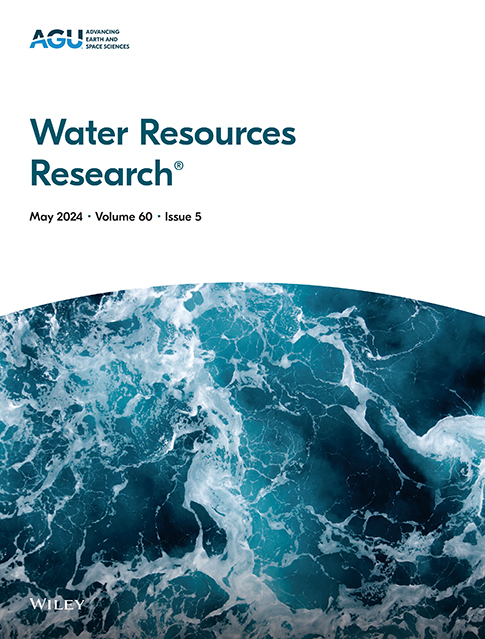High-Fidelity Numerical Study of the Effect of Wing Dam Fields on Flood Stage in Rivers
IF 5
1区 地球科学
Q2 ENVIRONMENTAL SCIENCES
引用次数: 0
Abstract
Trains of wing dams (spur dikes) are used in river engineering for navigation in many rivers, such as the Mississippi River. These structures increase water level due to added resistance, and thus increase flood stage. The redistribution of bed sediment associated with constriction scour in the central channel zone and deposition along the banks between wing dams, however, may result in a compensating decrease in water stage. The net effect of wing dams on flood stage is determined by a balance between these two effects. We apply a high-fidelity 3D numerical model (LES rather than RANS or shallow water approach) to investigate the flow, water level and sediment transport in wing dam fields. We study both fully emergent (tops of wing dams protrude above water surface) and submerged (tops of wing dams below water surface) fields. Our results for a simplified configuration show that (a) the additional resistance of wing dams does indeed increase water stage, but (b) much of this increase is reduced via in-channel redistribution of bed sediment, including non-local contraction scour in the main channel. In all cases studied here, when the bed is fully erodible, wing dams increase depth in the central channel region between the wing dam field, promoting navigability there. We provide a direct upscale our results to an Upper Reach of the Lower Mississippi River (URLMR) using distorted Froude scaling, but outline numerous caveats which motivate future studies.翼坝场对河流洪期影响的高保真数值研究
在许多河流中,如密西西比河,翼坝(直堤)的列车被用于河流工程的航行。这些结构由于增加了阻力而增加了水位,从而增加了洪水期。然而,与中央河道区域的收缩冲刷有关的河床沉积物的再分配以及翼坝之间河岸的沉积可能导致水阶的补偿性降低。翼坝对洪期的净效应取决于这两种效应之间的平衡。我们采用高保真三维数值模型(LES而不是RANS或浅水方法)来研究翼坝坝区的流量、水位和泥沙运移。我们研究了完全浮出水面(翼坝顶部突出水面)和淹没水面(翼坝顶部低于水面)的油田。我们对一个简化配置的结果表明:(a)翼坝的额外阻力确实增加了水位,但(b)这种增加的大部分通过河床沉积物的河道内再分配而减少,包括主河道的非局部收缩冲刷。在这里研究的所有案例中,当河床完全可侵蚀时,翼坝增加了翼坝区域之间的中央河道区域的深度,促进了那里的通航性。我们使用扭曲的弗劳德尺度将我们的结果直接升级到密西西比河下游上游(URLMR),但概述了许多激励未来研究的注意事项。
本文章由计算机程序翻译,如有差异,请以英文原文为准。
求助全文
约1分钟内获得全文
求助全文
来源期刊

Water Resources Research
环境科学-湖沼学
CiteScore
8.80
自引率
13.00%
发文量
599
审稿时长
3.5 months
期刊介绍:
Water Resources Research (WRR) is an interdisciplinary journal that focuses on hydrology and water resources. It publishes original research in the natural and social sciences of water. It emphasizes the role of water in the Earth system, including physical, chemical, biological, and ecological processes in water resources research and management, including social, policy, and public health implications. It encompasses observational, experimental, theoretical, analytical, numerical, and data-driven approaches that advance the science of water and its management. Submissions are evaluated for their novelty, accuracy, significance, and broader implications of the findings.
 求助内容:
求助内容: 应助结果提醒方式:
应助结果提醒方式:


